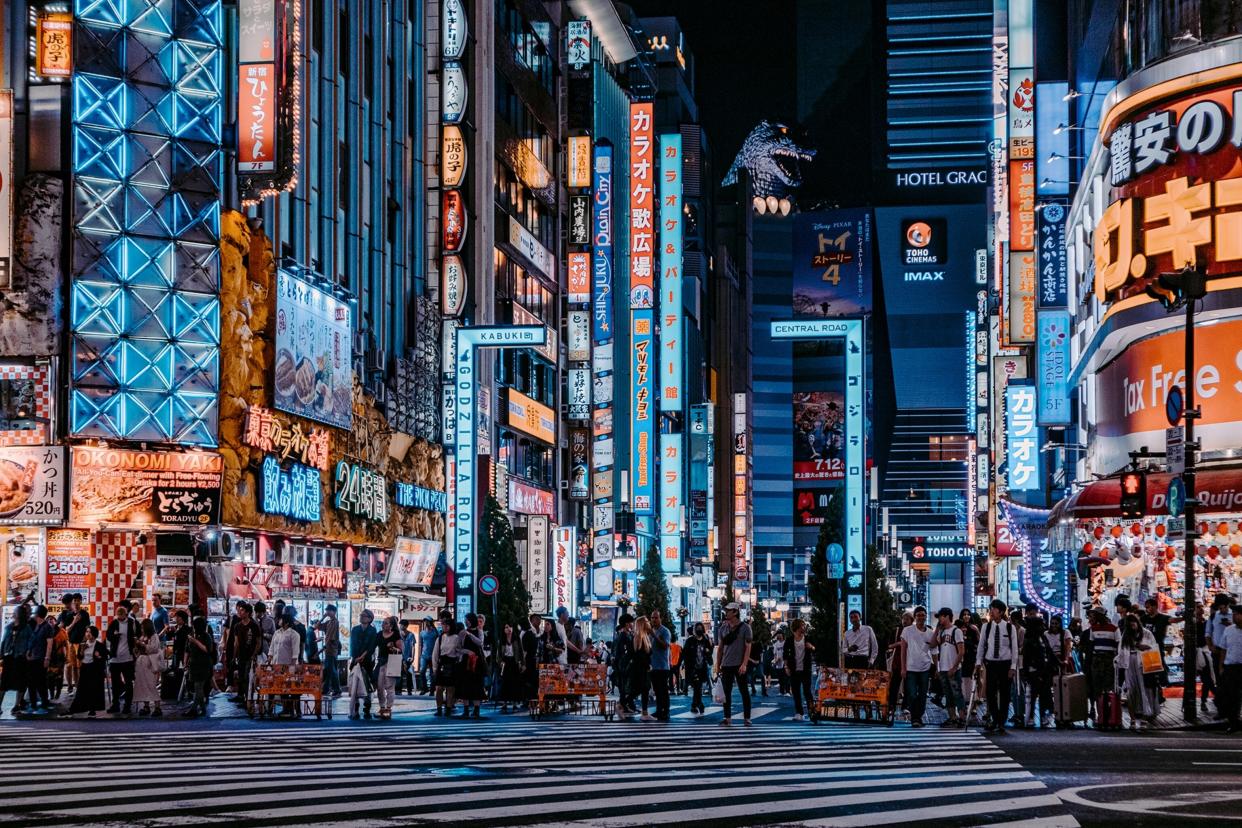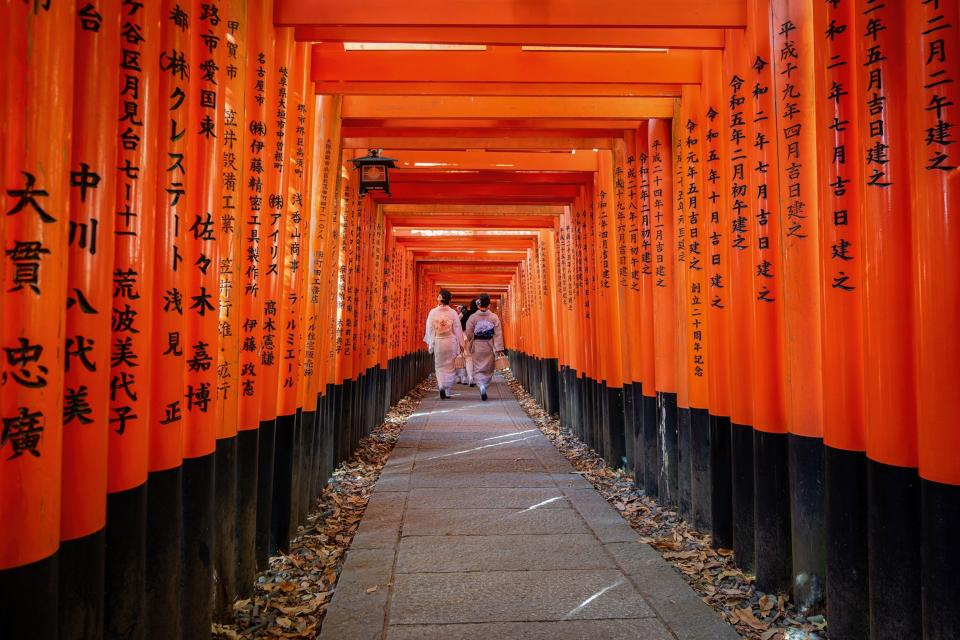
This article was produced by National Geographic Traveller (UK).
There is an undeniable enchantment to travelling in Japan; a bewitching magic sweeps through its incense-rich mountain temples and forests full of deer, settling over neon-lit towns. Even those who have yet to set foot on its shores are often captivated by it — and for good reason.
A large part of Japan’s exceptionality is that it rarely, if ever, disappoints. Its length and latitudinal range makes its natural environments strikingly diverse, which plays a huge role in the country’s enduring appeal.
Strung along Asia’s eastern edge, the rocky fingers of its northernmost point, on the island of Hokkaido, almost touch Russia and the climate there is often in line with that of Siberia. On the island’s west side, the ski resorts of Niseko are considered to have some of the best powder on the planet, while Hokkaido’s east fractures spectacularly each winter with the set and flow of sea ice.
In the months that avid skiers are navigating powdered drifts, Japan’s southern islands are blushing with sunshine and cherry blossoms, their blue-glass seas already warm. The same ocean current that makes the Philippines such an exceptional scuba destination feeds the islands of Okinawa. Here, abundant coral reefs crackle with tropical fish and sea turtles, alongside whales, sharks and manta rays.
Add to this the capricious Ring of Fire — a highly active tectonic belt that long ago formed Japan’s landscape and still regularly reshapes it with earthquakes and eruptions — and the result is some of the most dynamic scenery nature has to offer. Outdoor-focused trips bubble over with adventure, and travellers can try river-rafting glacial flows, hiking pilgrim mountain trails or cycling through rice-paddy fields.
Culture, too, changes along the latitudes. The Indigenous Ainu people of the north and Ryukyu of Okinawa still have distinct populations — but they are rarely what springs to mind when people think of Japanese culture. The country is a behemoth of preserved traditions, kept secret and safe largely thanks to the 1630s sakoku decrees that closed it off to the outside world for over two centuries. This isolationism left an indelible imprint on the national psyche and culture. Precious rituals, traditional architecture, arts and cuisine stood strong, particularly in the historic capital Kyoto, as the world changed around Japan.


When the country reopened its doors after 1853, Japan rapidly incorporated Western technology and ideas, while developing its own. So began an era of zealous modernity — technology, skyscrapers, shinkansen bullet trains, cosplay and karaoke — epitomised in great steel-and-glass metropolises like Tokyo and Osaka.
Today, travellers are greeted by a country of quiet reticence and ear-splitting pachinko pinball parlours, a subtropical paradise with breath-defying mountaintops, a place where monks share streets with steampunk vampires. Here, we look at two trip routes showcasing the best of Japan’s natural and cultural highlights.
Am I likely to encounter significant language barriers?
International events such as the Olympics have made Japan more traveller-friendly, with English guidance and signage now more common in larger cities. However, it’s still not prevalent and often non-existent in rural areas. Advance planning can make the language a charm, rather than a chore. Download translation apps for navigating restaurants, practise a handful of phrases and read up on transport how-to guides. Japanese people don’t expect you to speak a word of Japanese, so don’t be afraid to try.
How expensive is it to visit Japan?
Japan has a reputation as an expensive destination, but much of that comes down to flight prices. On the ground there are plentiful budget options. Try short-term rental apartments, hostels or small shared-bathroom B&Bs. Some of Japan’s best food — like donburi and ramen — is also cheap and quick. Transport and travel cards are generally no more expensive than the UK, often cheaper.
Is it worth getting a Japan Rail pass?
Last year’s 70% price hikes for the Japan Rail Pass have put them out of many people’s price range. They are still incredibly useful, especially if you really want to ride a shinkansen (bullet train), but alternatives are available. Instead of a whole-country pass, look into regional Japan Rail passes that fit your itinerary. These can work in tandem with Japan’s many low-cost domestic airlines, dropping you into different regions. Car hire is a cheap and easy option, with maintained roads and low speed limits — perfect for families and larger groups.
Is cherry blossom season a good time to go?
Japan’s March–April cherry blossom season is undoubtedly beautiful, but it has downsides. It’s the busiest time of year, tourist sites can be overrun with crowds, and accommodation and flights get more expensive and booked out. If you’re determined to see sakura, book about a year in advance to reduce stress and expense. If you’re more flexible, why not try seeing cherry blossoms in Okinawa around February, or late-April in Hokkaido. The latter is likely to be far less crowded until the busy Golden Week holiday in early May.
Are there any cultural sensitivities I should be aware of?
Definitely research Japanese customs and expectations in advance; there are many, but very few faux pas will get you into trouble. For example, sticking your chopsticks upright in rice is a big taboo, but no one will tell you off. Be considerate and conscientious, particularly about queuing, noise and littering. Take off shoes inside traditional hotels, homes and some restaurants, and assume both tattoos and clothes aren’t allowed in onsen — though there are occasional exceptions.
Published in the September 2024 issue of National Geographic Traveller (UK).
To subscribe to National Geographic Traveller (UK) magazine click here. (Available in select countries only).







